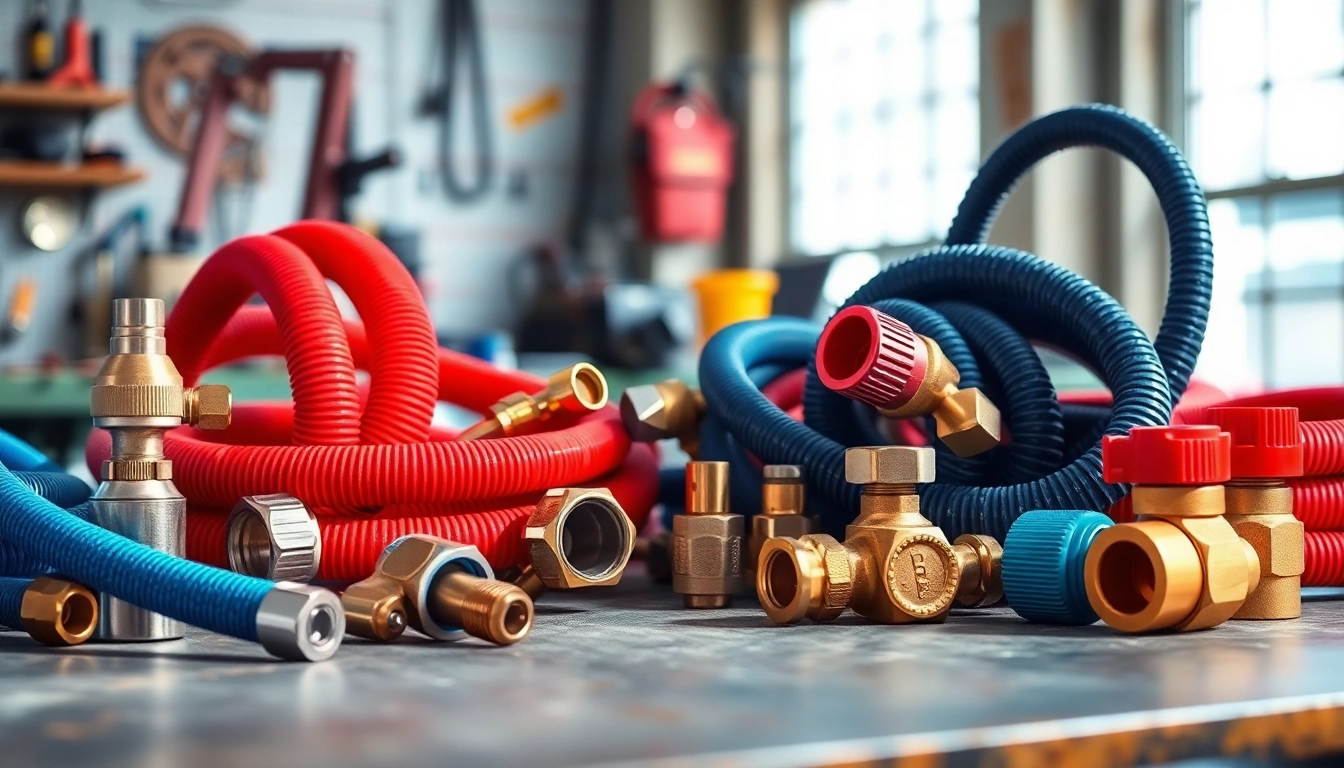Understanding Air Hoses and Fittings
In the world of pneumatic tools and machinery, air hoses and fittings are essential components that facilitate efficient operation. These elements form the backbone of any air-powered system, transferring compressed air from the compressor to the tool or equipment that requires it. Understanding the characteristics, types, and appropriate applications of these components can greatly influence the performance and durability of your tools.
What Are Air Hoses?
Air hoses are flexible tubes designed to convey compressed air. They come in a variety of materials, lengths, and diameters. Commonly made from rubber, polyurethane, or PVC, the choice of material directly affects the hose’s durability, flexibility, and operational temperature range.
Types of Air Fittings Explained
Air fittings are the connectors that secure air hoses to the tools or compressors. These fittings come in various types, including:
- Quick Connect Fittings: These allow for easy connection and disconnection from pneumatic tools without the need for tools.
- Straight Connectors: Simple fittings used to connect two hoses or a hose to a tool.
- Elbows: Helps in connecting hoses at angles, thereby managing space more efficiently.
- Adapters: These change the size or type of connection, making it easier to adapt to existing systems.
Choosing the Right Air Hose and Fitting for Your Needs
Selecting the appropriate air hose and fittings requires considering several factors:
- Application: Identify the specific tools and their requirements.
- Pressure Rating: Ensure the hose and fittings can handle the operational pressure.
- Temperature Ratings: Evaluate the environment the system will operate in.
- Material Compatibility: Confirm that the materials used in hoses and fittings are compatible with the chemicals or oils used in your operation.
Key Benefits of Using Quality Air Hoses and Fittings
Improved Efficiency in Pneumatic Tools
Quality air hoses and fittings ensure a steady flow of air, enabling tools to operate at peak performance. Inadequate hoses can lead to air leaks, reducing pressure and efficiency. This results in increased energy use and wear on the equipment.
Enhanced Durability and Longevity
Investing in high-quality air hoses and fittings significantly affects durability. For example, rubber hoses are robust and can withstand abrasions, while polyurethane hoses offer high flexibility and are less likely to kink or coil. The material chosen can lead to longer life cycles and lower replacement costs.
Safety Considerations When Using Air Hoses
The safety of staff and the integrity of equipment must be prioritized. Using properly rated hoses helps prevent ruptures or leaks that could lead to accidents. Regular inspection of hoses and fittings is advisable to identify wear and tear before it poses a risk.
Installation Best Practices for Air Hoses and Fittings
Steps to Properly Connect Air Fittings
Proper installation is key to performance:
- Ensure both surfaces of the fitting and the hose are clean.
- Insert the fitting into the hose until it reaches the stop.
- For threaded fittings, apply Teflon tape to the male threads before connection.
- Tighten the fittings securely using the proper tools, but avoid over-tightening.
Common Installation Mistakes to Avoid
Common pitfalls include:
- Failing to clean the fitting before installation can lead to poor connections and leaks.
- Over-tightening fittings can damage the hose and lead to premature failure.
- Neglecting to inspect hoses for damage prior to installation can result in failings after setup.
Maintenance Tips for Air Hoses and Fittings
Regular maintenance extends the life of your air hoses and fittings. Key tips include:
- Store hoses properly to avoid kinks and exposure to direct sunlight.
- Inspect hoses at regular intervals for wear, cracks, or bulges.
- Replace worn fittings immediately to prevent air loss and maintain efficiency.
Comparative Look: Rubber vs. Polyurethane Air Hoses
Pros and Cons of Each Type
Understanding the strengths and limitations of rubber and polyurethane hoses can help in making an informed choice:
Rubber Hoses
- Pros: Excellent durability, resistance to heat and abrasion, and good flexibility in colder temperatures.
- Cons: Heavier and can be less flexible compared to polyurethane.
Polyurethane Hoses
- Pros: Lightweight, high flexibility, and resistant to kinking.
- Cons: Generally less durable than rubber when exposed to extreme conditions.
When to Choose a Hybrid Air Hose
Hybrid hoses combine the best features of both rubber and polyurethane. These hoses are ideal when flexibility and durability in varied environments are paramount, making them suitable for most general applications.
Real-World Applications of Different Hoses
The choice between rubber, polyurethane, and hybrid hoses often depends on specific applications:
- Construction Sites: High abrasion resistance needed, making rubber hoses ideal.
- Automotive Repairs: Flexibility is crucial, making polyurethane hoses preferable.
- General DIY Projects: Hybrid hoses provide versatility for various tasks.
Brands and Products to Consider for Air Hoses and Fittings
Top Brands in the Market
Several reputable brands dominate the air hose and fitting market, including:
- Goodyear: Renowned for its durable rubber hoses.
- Flexzilla: Popular for its flexible and kink-resistant hose products.
- Milton Industries: Known for a wide range of quality air fittings and couplers.
Product Recommendations and Reviews
When choosing products, consider detailed reviews that highlight performance metrics like pressure ratings and material resistance. An example includes the Steelman Tools 15-Foot Coiled Air Hose, which is praised for its durability and ease of use in diverse applications.
Where to Buy Air Hoses and Fittings
Quality air hoses and fittings can be purchased at various hardware stores and online retailers like The Home Depot, Lowes, or specialty suppliers like Northern Tool. It’s crucial to compare prices and read customer reviews to ensure the lowest price and highest quality.




